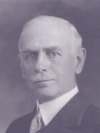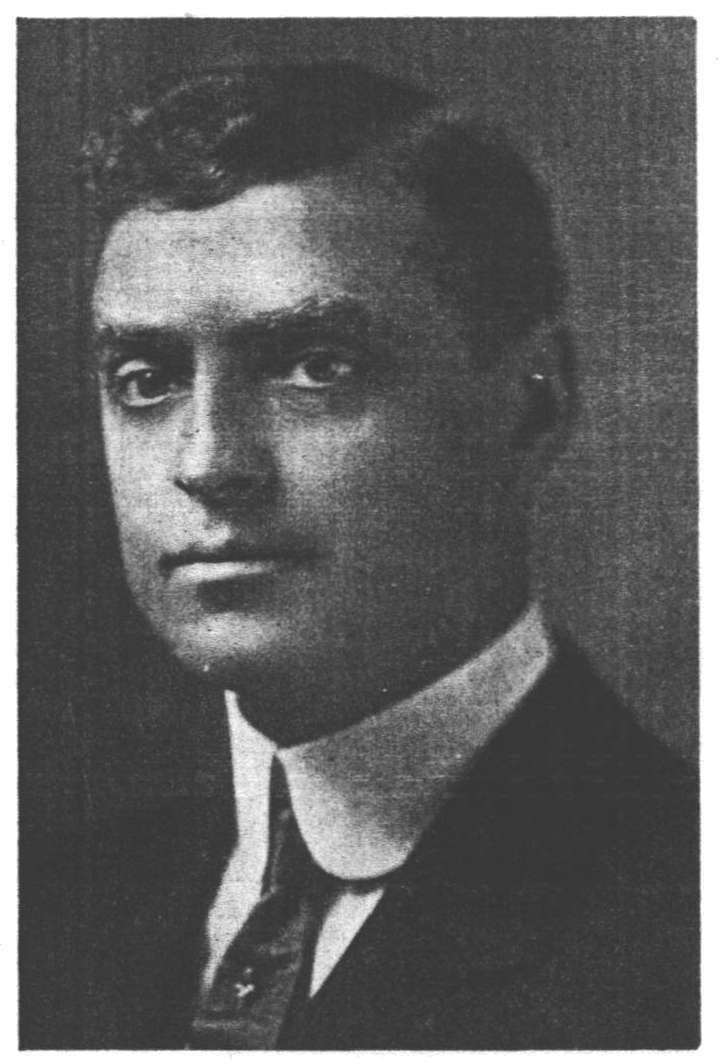Introduction
"Among the unsung cars of the Twenties," writes Tim Howley (see Bibliography), "is the Paige, whose advertising claimed immodestly, though with some justification, that here was The Most Beautiful Car in America."
The Paige, he continues, is one of
many a fine but forgotten car that rolled down the narrow, two lane highways of the Twenties to an undeserved end. The motor cemeteries of the decade are covered with such time tarnished epitaphs as Apperson, Lexington, Daniels, Elcar, Gardner, Moon, Haynes, H.C.S., Kenworthy, Rickenbacker, Roamer, Stearns, Velie, and maybe a dozen more that deserved to survive. . . A Paige is a rare sight today. Paige built many cars, and had a strong dealer organization in many parts of the country. Despite this, very few examples of the car have survived. Nobody ever thought of saving them.

Frederick O. Paige (Richard Paige collection)
The Paige-Detroit Motor Car Company built the Paige between 1909 and 1927 to the highest standards of production engineering for its day. Paige-Detroit also manufactured Paige trucks, 1918-1923, and the Jewett light six, 1922-1926. Sales topped 30,000 for most years. Peak production of 43,500 vehicles occurred in 1923. Cumulative 1910-1927 production was perhaps 400,000.
The Paige story begins with two men, Fred Paige and Harry Jewett.

Harry M. Jewett. The Horseless Age, December 1, 1916
Frederick Osgood Paige, 1863-1935, grew up in Detroit where his family settled when he was a child. He began work at age sixteen and helped establish a successful paper business in his twenties. In 1892 he joined his father-in-law in the insurance business. In 1904 he helped organize the Reliance Motor Car Company. At first Reliance made pleasure cars, but it soon switched exclusively to trucks. General Motors got into the truck business when it bought Reliance. In writing later of this period Paige declared: "I was then out of active business but I busied myself by designing and building a small passenger car, which attracted considerable attention."
Harry Mulford Jewett, 1870-1933, was a native of Elmira, New York, who went to the University of Notre Dame to study engineering. While an undergraduate in 1888 he made the first touchdown in a Notre Dame intercollegiate football game. He was a champion athlete both in college and later as a Detroit Athletic Club member. After he earned a civil engineering degree from Notre Dame in 1890, he began his career working on projects in Chicago and in Detroit. He was a member of the Michigan Naval Reserve and in the war with Spain served on the USS Yosemite. Later he went into the coal industry with a Chicago company, and in 1903 he started his own coal business in Detroit.
About 1909 Jewett decided to get into automobiles. Why? There are two clues. First, fellow coal dealer Alexander Malcolmson had bankrolled Henry Ford in 1902 (though Malcolmson later sold his shares and eventually returned to the coal business). Second, in October, 1908, Ford introduced a two-passenger runabout, his Model T, for $825 and proceeded to assemble over 12,000 in just over a year. Harry Jewett observed this and concluded there was an opportunity for him in building autos.
That summer he found Fred Paige and his car, a roadster with a unique two-stroke, three-cylinder 25 HP engine. Between the two of them they gathered a small group of Detroit businessmen, who agreed to pool their combined talent and resources to manufacture the car. (See also the biography that appeared in the March 1, 1917 issue of The Horseless Age Magazine.)
|
Paige-Detroit Company Organized The Paige-Detroit Motor Car Company has been organized in Detroit, Mich., with a capital stock of $100,000, and the following officers: Frederick O. Paige, president and general manager; Willis Buhl, vice president; Wm. B. Cady, secretary, and Gilbert W. Lee, treasurer. The company have taken a lease of the old Stearns laboratory building on Twenty-first street, and have placed orders for the necessary machinery. The first product of the company will consist of a three cylinder, two cycle runabout, to sell at $800, and it is expected to begin the delivery of cars by December 1. The Horseless Age Magazine, October 6, 1909 |
The new company quickly reserved space in New Year's Day auto shows in New York and in Detroit. In addition, Paige-Detroit acquired an agent in New York City when William Colt and Harry Stratton formed the Cole-Stratton Company and signed up to handle the Paige-Detroit roadster on behalf of the newcomer from Automobile City
at their Broadway and Sixty-eighth Street location; further, Cole-Stratton planned a second agency in Philadelphia (The Automobile Magazine, November 11, 1909 and December 2, 1909).
| < Paige | 1910 > |